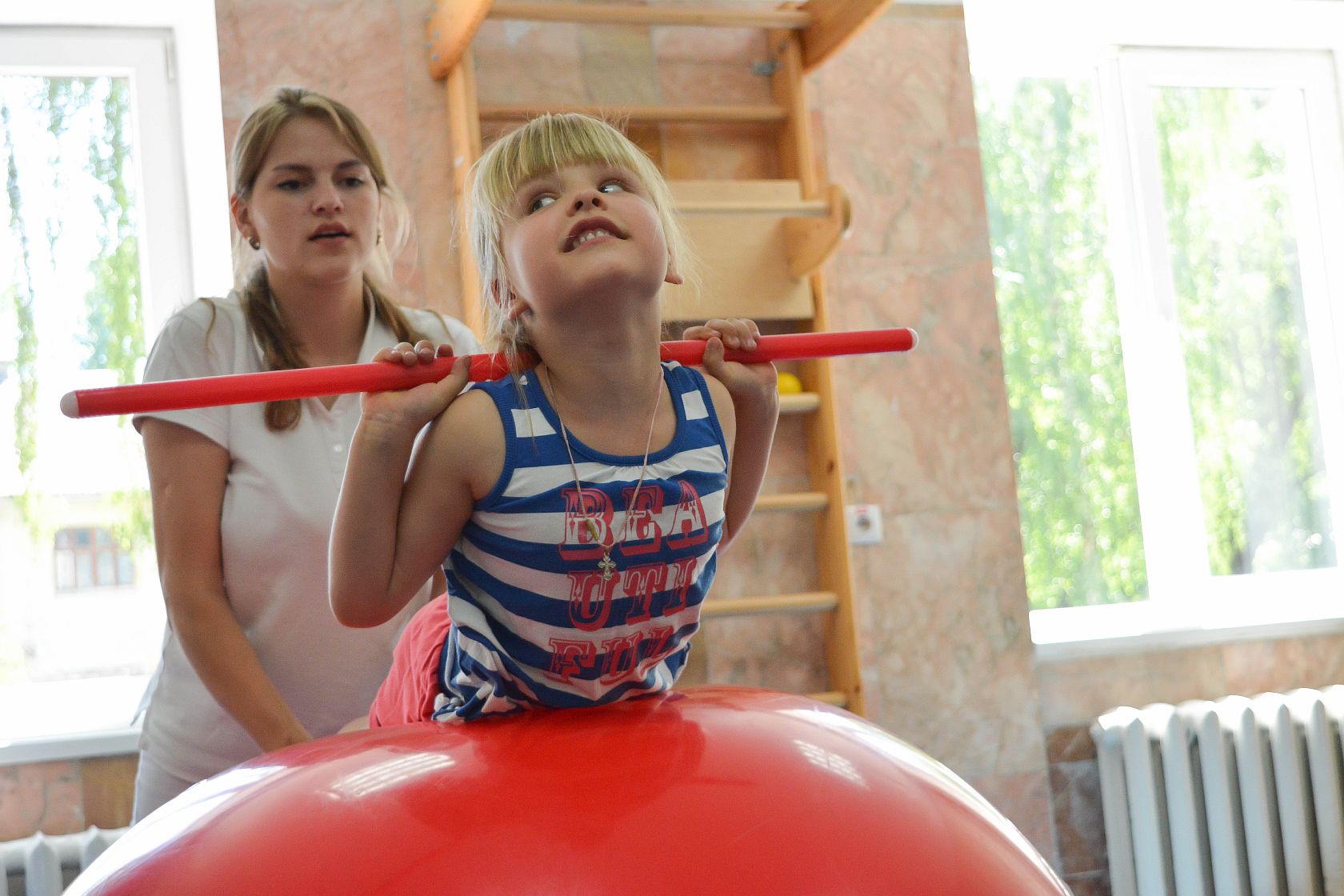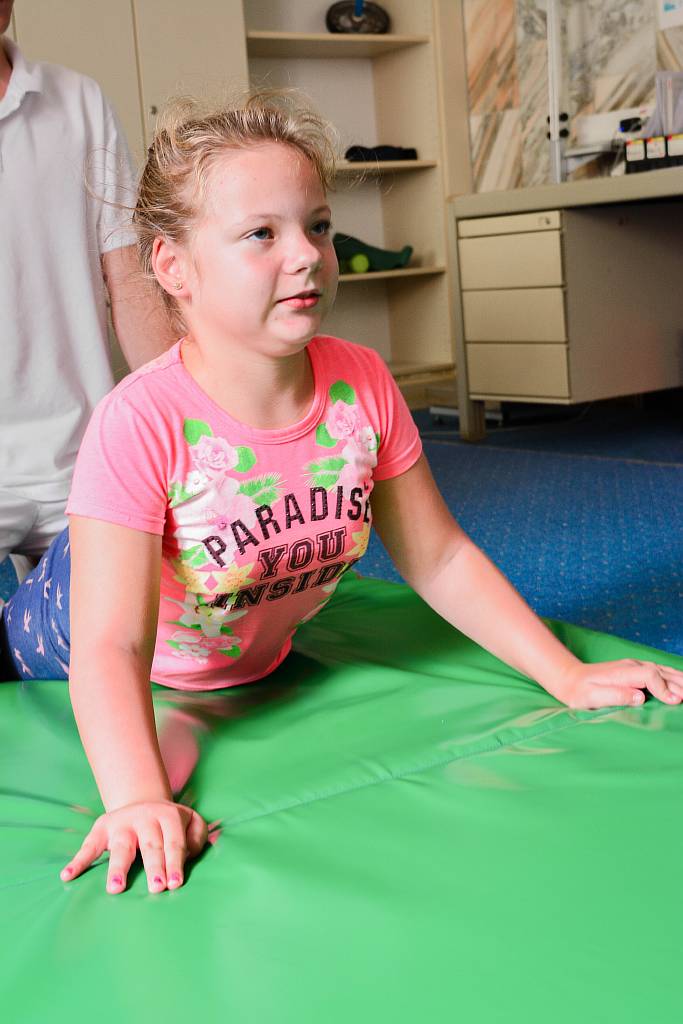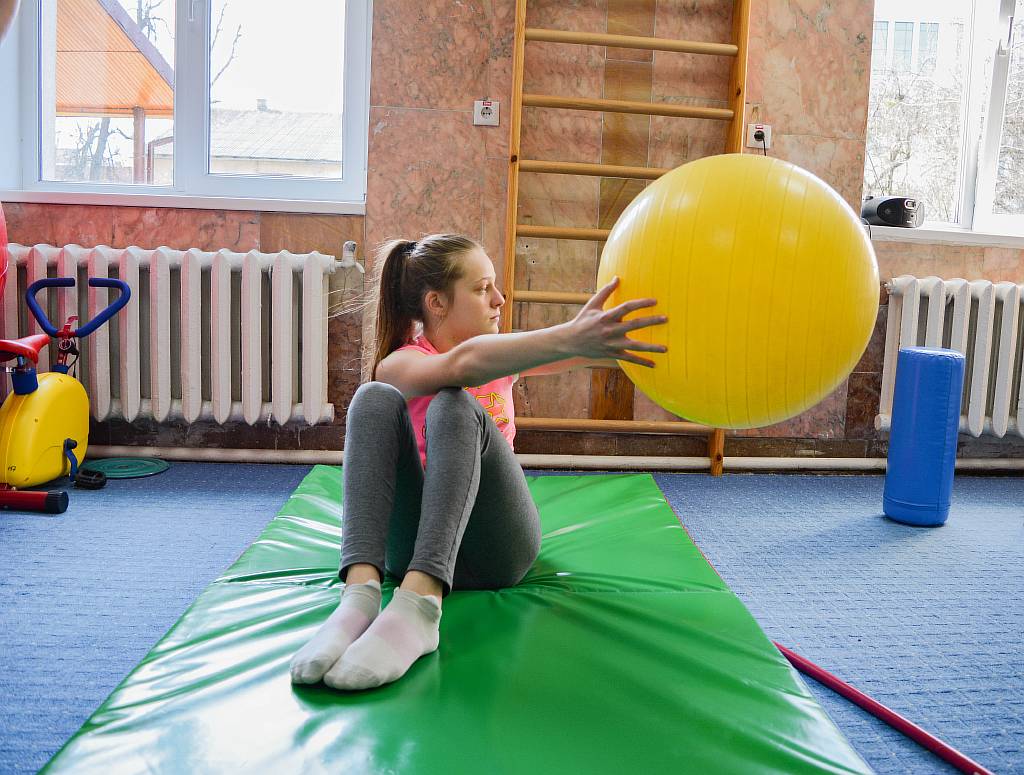
Mobilizing physical therapy is a basic kinesiotherapeutic component of rehabilitation according to the Professor Kozyavkin Method. It is an integral part of the structure of our Method and is one of the main modalities that produce the effect.
Mobilizing physical therapy, as well as biomechanical correction of the spine, reflexotherapy, and special massage system, belong to the main rehab components that we prescribe to patients. These components of the Kozyavkin Method complement and reinforce each other. We adapt the rehabilitation course for each patient, and the medical doctor selects the most effective combination of rehab components and their total time, duration, and sequence.
The main indications for mobilizing physical therapy are neurological disorders in children, such as cerebral palsy and delayed milestone, dorsalgia, scoliosis, migraine, sequelae of injuries, stroke, and inflammatory diseases of the nervous system (more indications and contraindications can be found here).
Сonsidering the individual abilities of the patient, a medical doctor and a physical therapist jointly define the aims and select the set of exercises for mobilizing physical therapy, their dosage, and mode.

Mobilizing physical therapy is implemented based on an entirely new functional state of the body that occurs after the biomechanical correction of the spine and joint mobilization. It is the main difference of mobilizing physical therapy as a component of the Kozyavkin Method, compared with other approaches that are used worldwide.
This new functional state manifests in:
- muscle tone normalization
- improvement of the mobility in all regions of the spine and large joints
- restoration or improvement in motor and sensory nerve conduction at different levels
- improvement in blood circulation and tissue trophicity
This background allows a physical therapist to use other rehab components more effectively. Development of correct patterns of active movements and strengthening the muscles of the trunk occur by the repetition technique: an increase in the number of repetitions of actions or movements during mobilizing physical therapy.
An increase of force applied to spastic muscles is not used due to functional and biochemical changes as consequences of abnormal muscle tone that lead to strength exercise intolerance and the need for extra recovery time after exercises.

During the implementation of the tasks of mobilizing physical therapy, it is essential to adhere to the basic principles:
- The principle of "from the center to the periphery" (dominant; the point is that the initial work focuses on large proximal joints and major muscle groups with further attention to distal joints and muscles).
- The principle of "from the passive to active movement" (if the active movements are absent or restricted, we use cyclic passive movements in anatomical planes with their gradual transformation into passive-active movements, such as ideomotor actions and active movements with support, and their further active repetition).
All components of mobilizing physical therapy aimed to activate the compensatory mechanisms of the body and develop or restore the correct patterns of movements and posture. In turn, it contributes to the development or enhancement of fundamental motor skills and improves the overall Quality of Life.

It should be noted that sessions of mobilizing physical therapy are conducted by certified physical therapists. Besides professional standards in higher education, they receive continuous training during thematic courses and seminars, undertake weekly studies for staff, and participate in various international scientific conferences and symposia.
